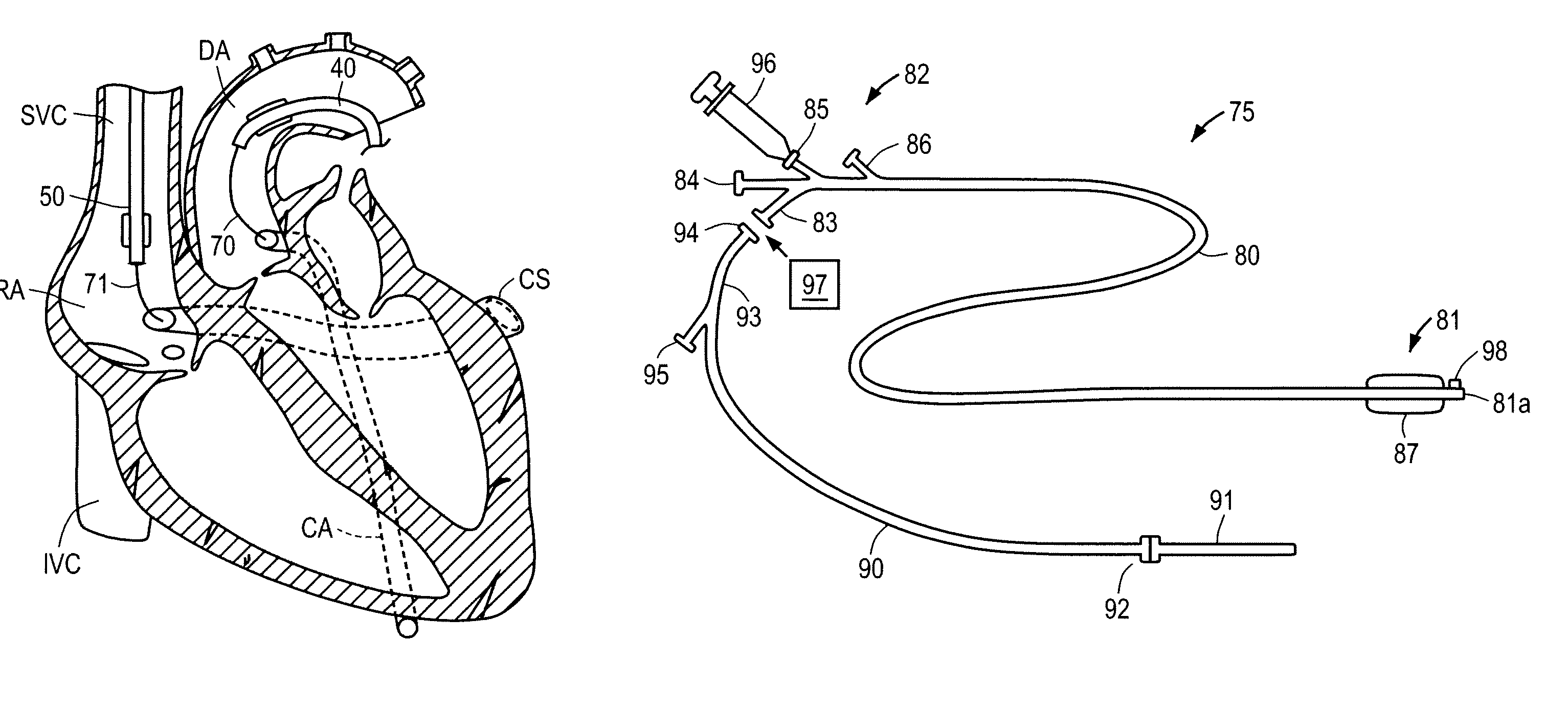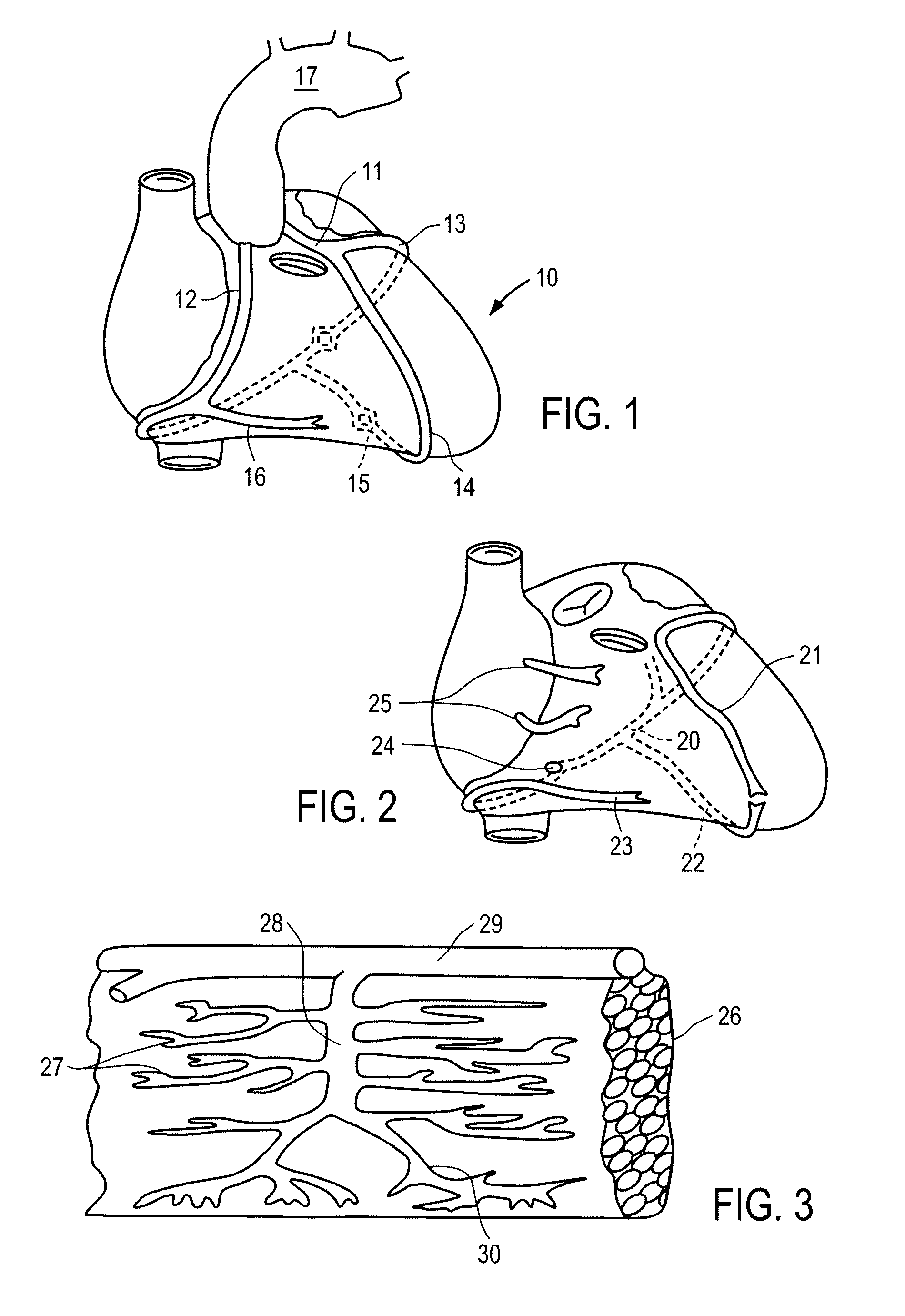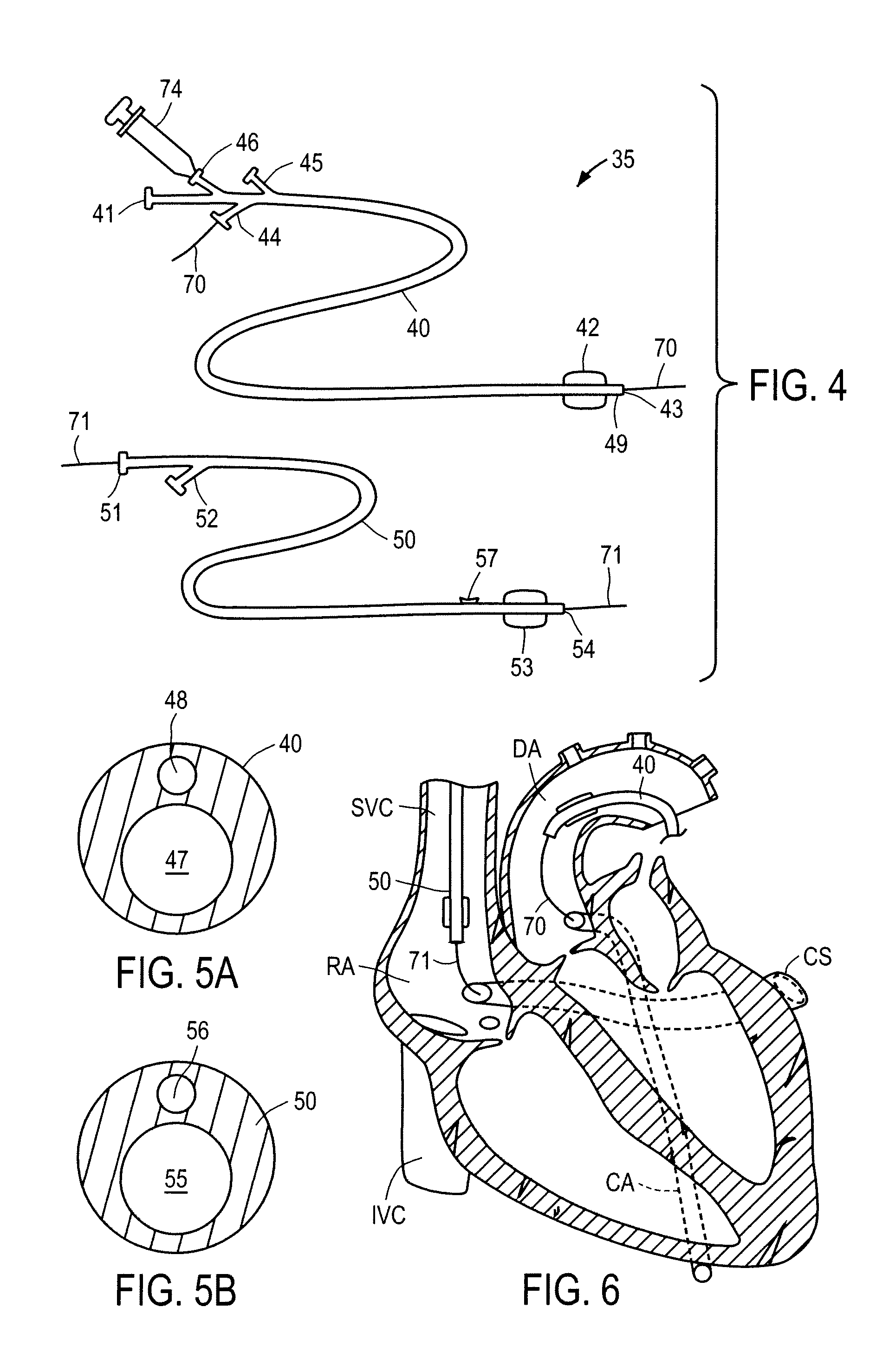Methods and apparatus for treating infarcted regions of tissue following acute myocardial infarction
By employing a delivery catheter with a flow control mechanism to manage blood flow through the coronary sinus, the method effectively increases the residence time of stem cells in the infarcted heart tissue, addressing the inefficiencies of conventional injection methods and promoting tissue regeneration.
- Summary
- Abstract
- Description
- Claims
- Application Information
AI Technical Summary
Benefits of technology
Problems solved by technology
Method used
Image
Examples
Embodiment Construction
[0037]FIGS. 1 to 3 depict the coronary arterial and venous systems of a human heart. In FIG. 1, the myocardium of heart 10 is nourished by left coronary artery 11 and right coronary artery 12. Left coronary artery 11 comprises circumflex branch 13 and left anterior descending coronary artery 14; right coronary artery 12 comprises descending posterior branch 15 and marginal branch 16. Left and right coronary arteries 11 and 12 emanate from aorta 17.
[0038]Referring to FIG. 2, the cardiac venous system of heart 10 comprises coronary sinus 20, which provides drainage for great cardiac vein 21, middle cardiac vein 22, and small cardiac vein 23. Deoxygenated blood flowing into coronary sinus 20 exits via coronary sinus ostium 24 into the right atrium. The venous system further includes anterior cardiac veins 25 that drain directly into the right atrium.
[0039]With respect to FIG. 3, myocardium 26 has a lattice of capillaries 27 that drain deoxygenated blood into intramyocardial veins 28. F...
PUM
 Login to View More
Login to View More Abstract
Description
Claims
Application Information
 Login to View More
Login to View More - R&D
- Intellectual Property
- Life Sciences
- Materials
- Tech Scout
- Unparalleled Data Quality
- Higher Quality Content
- 60% Fewer Hallucinations
Browse by: Latest US Patents, China's latest patents, Technical Efficacy Thesaurus, Application Domain, Technology Topic, Popular Technical Reports.
© 2025 PatSnap. All rights reserved.Legal|Privacy policy|Modern Slavery Act Transparency Statement|Sitemap|About US| Contact US: help@patsnap.com



